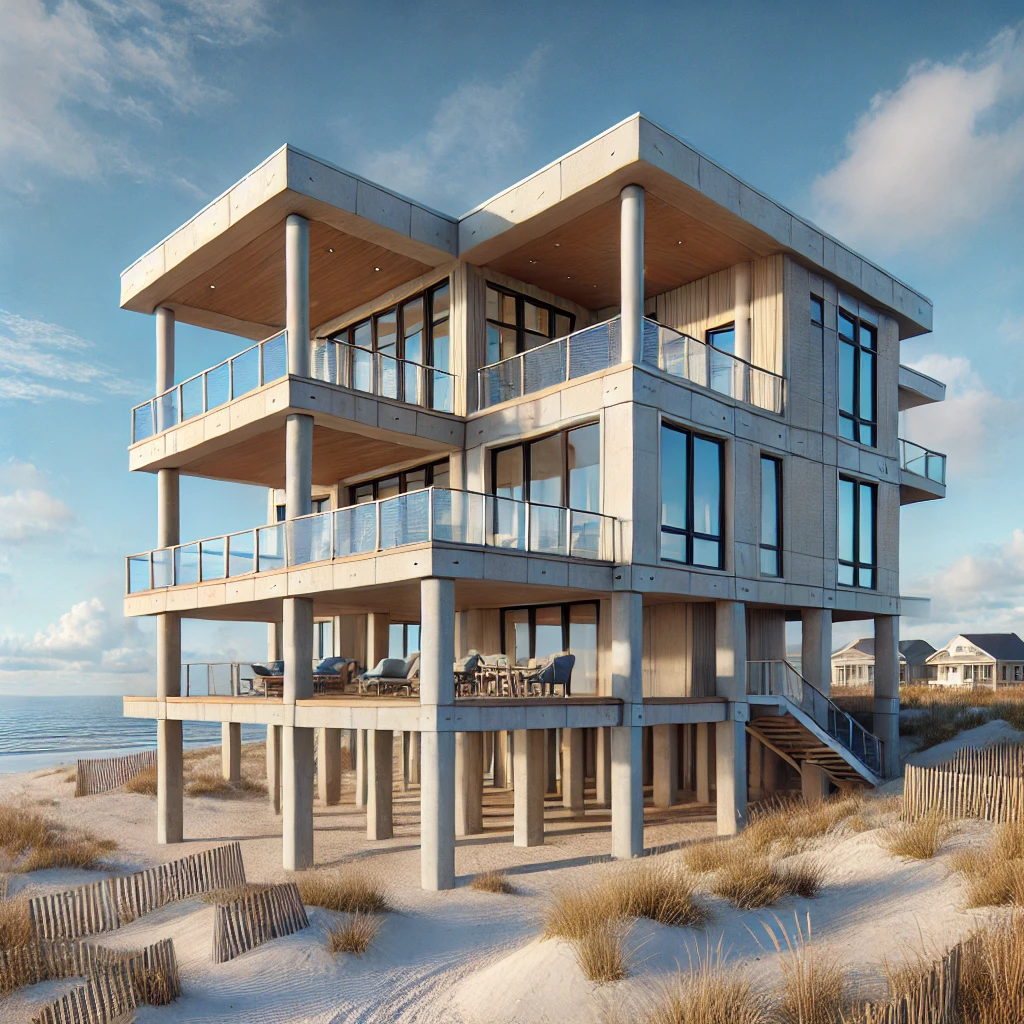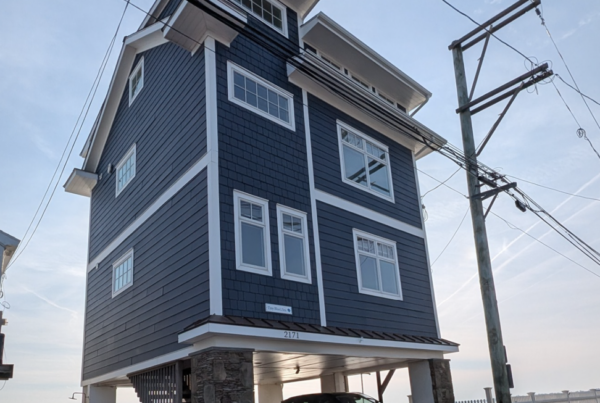Connecticut’s coastal communities offer breathtaking views and a serene lifestyle, but they also face unique challenges from flooding, hurricanes, and storm surges. To address these risks, many homeowners are turning to FEMA (Federal Emergency Management Agency) specifications when building or renovating.
These standards ensure homes are resilient, safe, and equipped to handle extreme weather. However, building to FEMA standards isn’t without its challenges. Here’s a closer look at the benefits and potential downsides of FEMA-compliant homes in coastal Connecticut.
Why Build to FEMA Standards?
FEMA standards are designed to mitigate damage in high-risk flood zones. By ensuring homes are elevated, reinforced, and built with durable materials, these guidelines help protect against rising waters and high winds. For homeowners, this translates to enhanced safety, lower long-term repair costs, and often reduced flood insurance premiums. However, achieving compliance comes with additional costs and considerations.
Key Features of FEMA-Compliant Construction
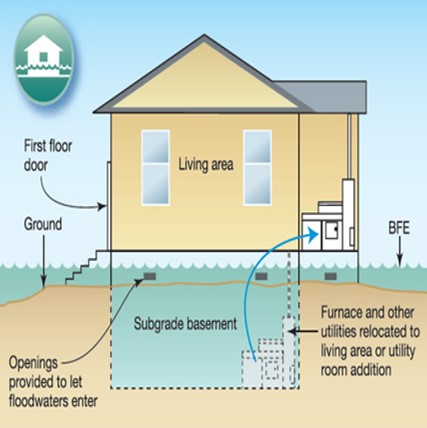
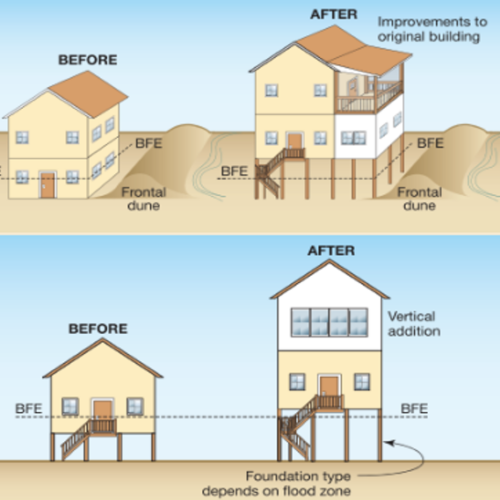
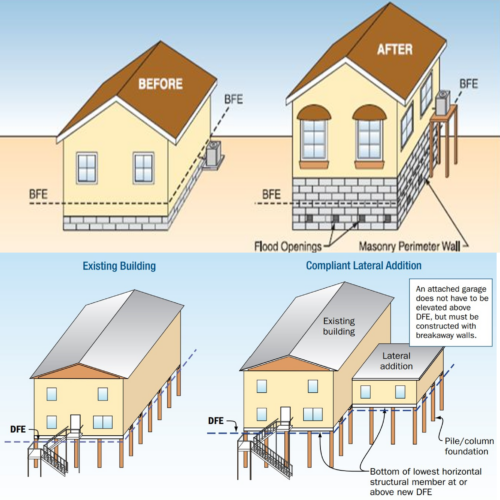
Building to FEMA standards requires specific materials, techniques, and designs. Some of the key features include:
Elevated Foundations
Homes in flood zones must be built above the Base Flood Elevation (BFE), which represents the height water could reach during a major flood. In coastal Connecticut, this often means elevating the home on pilings, columns, or reinforced platforms. While this protects against flooding, it can lead to practical challenges, such as navigating flights of stairs or the added cost of installing an elevator for accessibility.
Open Foundations and Breakaway Walls
To reduce the impact of storm surges, FEMA guidelines call for open foundations that allow water to flow beneath the structure. For enclosed areas below the BFE, breakaway walls are required, designed to detach during flooding to minimize pressure on the home. While effective, these features can limit the use of lower levels for storage or other purposes.
Flood-Resistant Materials
FEMA-compliant homes use materials that can withstand prolonged water exposure. Reinforced concrete, treated wood, and water-resistant masonry are common choices. These materials are durable and effective but often come at a premium cost compared to traditional construction options.
Structural Reinforcements
High winds pose another risk in coastal areas, and FEMA-compliant homes include reinforcements such as hurricane straps, impact-resistant windows, and reinforced roofs. These features significantly improve safety but also increase construction expenses.
Elevated Utilities
To prevent damage during flooding, all essential systems, including electrical panels, HVAC units, and water heaters, must be installed above the BFE. While this enhances resilience, it can complicate repairs and maintenance, as these systems may become less accessible.
Site Planning and Drainage
FEMA standards often require comprehensive site planning to manage water flow effectively. This includes using permeable surfaces, advanced drainage systems, and landscaping designed to direct water away from the home. These measures help reduce erosion and flooding but add to the overall cost of construction.
The Downsides of FEMA Compliance
While FEMA-compliant homes offer significant benefits, there are some drawbacks that homeowners should consider:
- Higher Construction Costs: Building to FEMA standards can increase the cost of construction due to the use of specialized materials, elevated foundations, and additional reinforcements.
- Accessibility Challenges: Elevated homes often require flights of stairs to access the living areas. For many homeowners, especially those with mobility issues, this may necessitate the installation of an elevator, adding to both construction and maintenance expenses.
- Design Limitations: Features like open foundations and breakaway walls can limit the use of ground-level space, making it less practical for storage or living purposes.
- Ongoing Maintenance: Elevated utilities and specialized features may require more frequent or costly maintenance compared to conventional homes.
Is It Worth It?
In many towns and municipalities, FEMA compliance is not just a recommendation but a requirement when undertaking significant renovations or new construction projects. Despite the added costs and practical challenges, FEMA-compliant homes are often a worthwhile investment for coastal Connecticut residents. The safety, reduced flood risk, and potential insurance savings often outweigh the downsides, especially in areas prone to severe weather. Furthermore, these homes tend to retain higher property values due to their resilience and compliance with modern building codes.
Balancing Resilience and Lifestyle
When building or renovating a home in a coastal area, it’s essential to weigh the pros and cons of FEMA compliance. Working with architects and builders experienced in FEMA regulations can help you design a home that meets safety standards while addressing challenges like accessibility and cost. Thoughtful planning can ensure your home remains functional, beautiful, and secure for years to come.
Cress is a leading real estate agent serving buyers of high-end properties in Fairfield County, CT. What sets us apart from other agents is our unwavering commitment to offering the lowest fees in the industry for the level of service we provide. We believe you shouldn’t have to sacrifice quality for affordability.
Our flat fee buyer’s agent services and commission rebate models make luxury real estate more accessible, delivering top-tier service and unmatched value. By streamlining operations and leveraging technology, we pass those savings directly to you, ensuring an exceptional real estate experience. For more information, visit www.callcress.com.
Doug Cress
(212) 203-5251
doug@cress.co
License #RES.0832278
Fairfield County, CT
Enterprise Realty Inc.
License #REB.0751297
80 Huntington St.
Shelton, CT 06484

